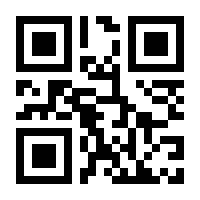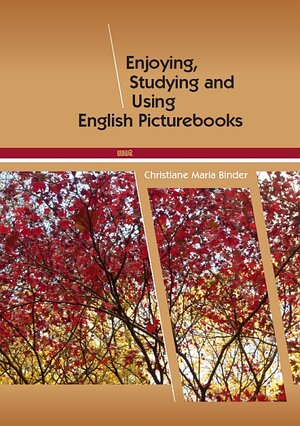Enjoying, Studying and Using English Picturebooks
von Christiane Maria BinderThe picturebook is a format which combines literary, artistic, technical and commercial expertise. Apparently simple and innocent at first sight, the genre can actually be seen as the most complex kind of children’s literature to date. Two art forms, the literary and the pictorial, interweave to bring about the most astonishing results of intermediality. This interanimation of text and pictures produces an iconotext, a third space. The unique interplay of verbal and visual storytelling offers infinite possibilities of meaning-making.
Over the last few decades the status of the picturebook has undergone radical changes: in the arts, education, language acquisition and foreign language teaching, and academia. From being a rather conventional affair, the picturebook has turned into a sophisticated product. Significant changes in the publishing industry have made the postmodern picturebook much more experimental in thematic, linguistic and artistic terms. Literary theory, likewise, has contributed to much innovation – a better understanding of the need for a new mode of communication with new generations of child readers. So the picturebook is currently one of the most heatedly debated genres.
Dealing with English picturebooks in Germany requires cross-disciplinary and cross-national/intercultural approaches. It takes a background in linguistics, aesthetics, art history and theory, religion, pedagogy, psychology and psychoanalysis, the educational sciences, literary studies, film and media studies, and cultural studies to live up to the challenges of the format. This monograph considers
• the history of children’s literature and children’s literature studies
• childhood studies
• reading research, literacy development and reading pedagogy
• the semiotics of the picturebook: narrative and visual storytelling
• the history, technology and aesthetics of children’s book illustration and graphic design
• issues of multilingualism, multiculturalism and interculturality
• literary didactics: using picturebooks in preschool, in the primary EFL classroom and at university
This book addresses all lovers of picturebooks, but in particular students aiming to improve their analytical, interpretative, intercultural and teaching skills, and teaching staff at preschool, school and university eager to professionalize their practice of using picturebooks.
Contents
1. Introduction ......................................................................................................... 1
2. The History of Children’s Literature and Children’s Literature Studies .... 12
2.1 Introduction ......................................................................................................... 12
2.2 Children’s literature as a challenge for academia ................................................ 13
2.3 The implications for a modern study of children’s literature ............................... 22
2.4 Shifts in paradigm in children’s literature studies ............................................... 25
2.5 New approaches to the picturebook ..................................................................... 33
2.6 The role and importance of children’s literature.................................................. 42
2.7 The place of children’s literature studies
in English and American studies in Germany ..................................................... 45
2.8 Teaching children’s literature at school and university ....................................... 46
3. Childhood Studies ............................................................................................. 52
3.1 The time factor: literary history ........................................................................... 52
3.2 The implied reader of children’s literature: literary theory .................................. 53
3.3 Suitable picturebooks for children ....................................................................... 56
4. Reading Research, Literacy Development and Reading Pedagogy ............... 60
4.1 Introduction ......................................................................................................... 60
4.2 Reading as a cultural technique, early reading socialization,
and how to teach literacy ..................................................................................... 61
4.3 The attractivity of reading: integrating books and other media ........................... 65
4.4 The usefulness of literary theory for the study of children’s literature ................ 66
4.5 The agency of texts in the making of readers: new notions of literacy
and reading pedagogy .......................................................................................... 74
4.6 Development of verbal and visual literacy through picturebooks ........................ 96
5. The Semiotics of the Picturebook: Narrative and Visual Storytelling ........ 106
5.1 Introduction ....................................................................................................... 106
5.2 A special case of intermediality: interanimation of text and pictures
in English picturebooks ..................................................................................... 106
5.3 What is a picturebook? ...................................................................................... 107
5.4 The picturebook: verbal and visual literacy, double representation
and information, deception and irony ................................................................ 110
5.5 Text-picture interplay ........................................................................................ 128
5.6 Towards multitextualism, multiple literacies and the visual chronotope ........... 131
5.7 Picturebook typology: types of text-picture interaction ..................................... 137
6. The History, Technology and Aesthetics of
Children’s Book Illustration and Graphic Design ........................................ 146
6.1 Introduction ....................................................................................................... 146
6.2 Picturebooks as works of art.............................................................................. 147
6.3 The nexus of materials, technology and aesthetics ............................................ 155
6.4 Aesthetics and market ....................................................................................... 156
6.5 Book formats and the anatomy of the picturebook ............................................ 162
6.6 Art aspects of the picturebook: materials/media, techniques,
design and style ................................................................................................. 167
6.7 Book art: the creative interplay of technique/technology and aesthetics ........... 172
6.8 Picturebook publishing: current trends and future prospects ............................. 177
7. Issues of Multilingualism, Multiculturalism and Interculturality ............... 189
7.1 Introduction ....................................................................................................... 189
7.2 Difficulties and problems in the encounter of foreign cultures
through children’s books .................................................................................. 191
7.3 Crossing cultures: children’s literature in translation as a cultural transfer ....... 211
7.4 Presuppositions for a successful teaching of multi- and interculturality ............ 234
7.5 Criteria for a critical assessment of multi- and intercultural books ................... 243
7.6 Creative approaches to teaching multi- and interculturality:
picturebooks and folklore .................................................................................. 251
8. Literary Didactics: Teaching Picturebooks in Preschool
and in the Primary EFL Classroom ............................................................... 254
8.1 Introduction ....................................................................................................... 254
8.2 Early multilingualism: learning to read and write in several languages
at preschool age ................................................................................................ 256
8.3 New methods of bilingual teaching and learning:
(early) immersion and bilingual education ........................................................ 267
8.4 The use of story-based approaches and techniques of storytelling .................... 300
8.5 The potential of picturebooks and the aims and effects of teaching them ......... 310
8.6 General pedagogical-didactic principles of teaching early English lessons ....... 315
8.7 The use of picturebooks in early English lessons:
techniques and working methods ...................................................................... 324
8.8 Affiliated creative approaches to working with picturebooks:
drawing, making picturebooks, storytelling, and poetry .................................... 329
8.9 Recommendations for meaningful choices of appropriate picturebooks:
criteria for selection ........................................................................................... 350
9. Recommendations of Picturebooks ................................................................ 359
9.1 Introduction ....................................................................................................... 359
9.2 Children’s books as occasions for reading and sharing ..................................... 361
9.3 Children’s books and their medial realizations .................................................. 369
9.4 Children’s vs. adults’ ways of reading .............................................................. 376
9.5 Interculturality: African and Western lifestyles ................................................. 380
10. Epilogue............................................................................................................ 384
Bibliography ............................................................................................................. 385








